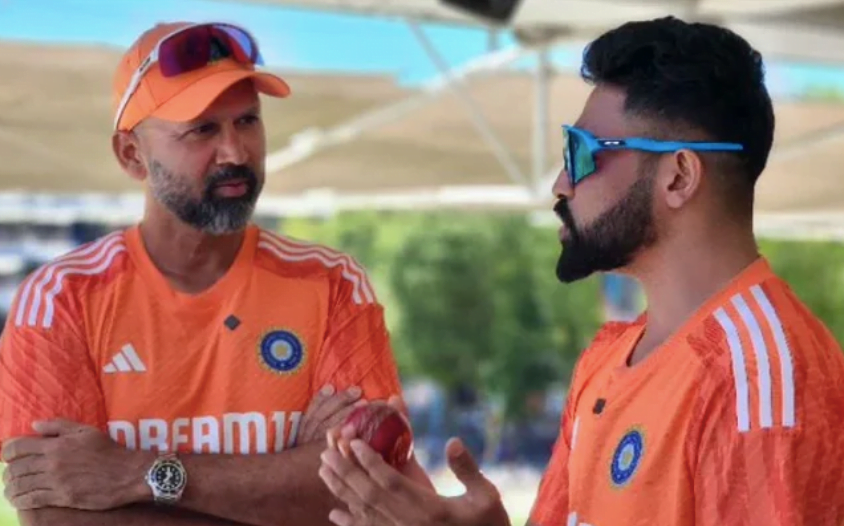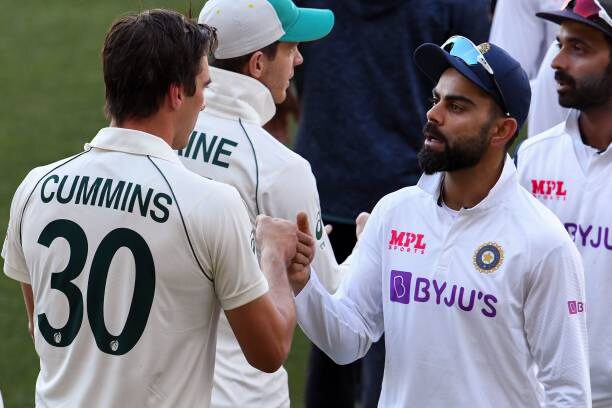
(Getty Images)
Paras Mhambrey, the former bowling coach of the Indian Cricket Team, highlighted that Jasprit Bumrah’s frequent injuries last year provided an opportunity for Mohammed Siraj to shine. With Bumrah sidelined for significant periods, including during the WTC Final against Australia, the team turned to Siraj to step up as their leading pace bowler.
Siraj embraced the challenge admirably and made significant strides as a white-ball bowler for Team India, eventually ascending to the top spot in the ICC ODI bowling rankings.
Paras Mhambrey discusses Mohammed Siraj’s progression as a white-ball bowler for Team India.
Celebrating the growth of Mohammed Siraj, Mhambrey emphasized how the Hyderabad pacer stepped up in Jasprit Bumrah’s absence, taking charge of India’s pace attack and delivering outstanding performances. He credited this transformation to meticulous behind-the-scenes work.
According to the former bowling coach, Siraj’s evolution into a formidable white-ball bowler was a result of strategic planning, consistent effort, and the unwavering support of captain Rohit Sharma. They relied on data-driven strategies, effective communication, and a methodical approach to enhance Siraj’s skills and bolster his self-assurance.
Mhambrey highlighted the pivotal role played by Rohit Sharma in endorsing these plans, which enabled Siraj to execute his strategies with conviction and ultimately achieve the distinction of becoming the top-ranked ODI bowler.
Rohit Sharma was a big help in Mohammed Siraj’s development: Paras Mhambrey
Paras Mhambrey was quoted as saying by The Indian Express: “That’s something we constantly worked on and that’s where data and communication come in. We had a lot of one-on-one chats so that he sticks to a plan. It won’t come straight away. We told him what we expected from him. And it was wonderful to have Rohit also buy into the plan.
Once Rohit trusted the plan, the bowler wasn’t going to be reluctant. He was given the time and Rohit trusted him because we saw the potential in Siraj. And with the help of data, we were able to pass on the right message to him.”
Mhambrey acknowledged that Siraj faced challenges early on in his learning curve but noted significant progress in subsequent matches. He emphasized the adjustments needed when transitioning between red-ball and white-ball cricket, particularly in refining lengths and maintaining control consistently. Mhambrey expressed satisfaction with Siraj’s notable development in these aspects.
It was all about cutting down the margins: Mhambrey
Siraj’s proficiency in T20 cricket, characterized by his pace, variations, and knack for exploiting surface conditions, served as a solid foundation for refining his precision in ODIs. According to the former coach, the focus was primarily on minimizing errors to further bolster his effectiveness in the shorter formats.
Mhambrey signed off by saying, “Mistakes did happen, but with every game, he was progressing. From red ball to white ball, he had to work a lot on his lengths and show control and discipline for long periods. Siraj had everything – pace, variations, and control. He could generate something off the surface.
We used T20s to good use because he has less margin of error in the format and once you get the control there, you take that into ODIs as well. That is what Siraj did. It was all about cutting down the margins.”

